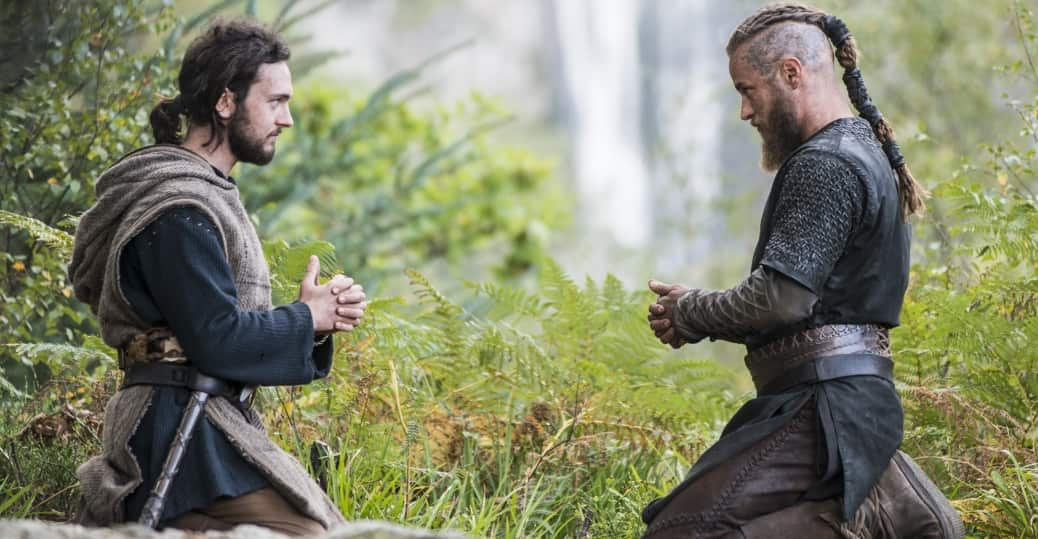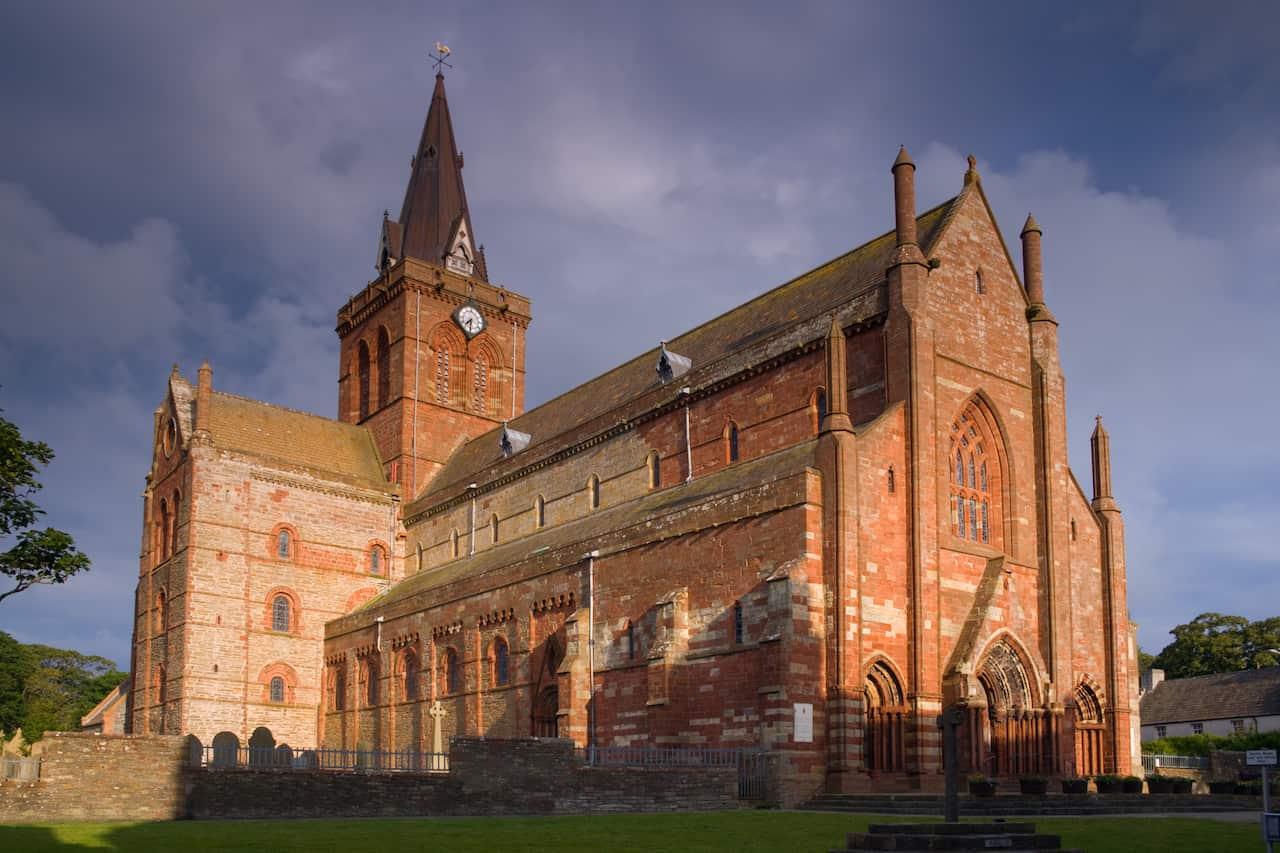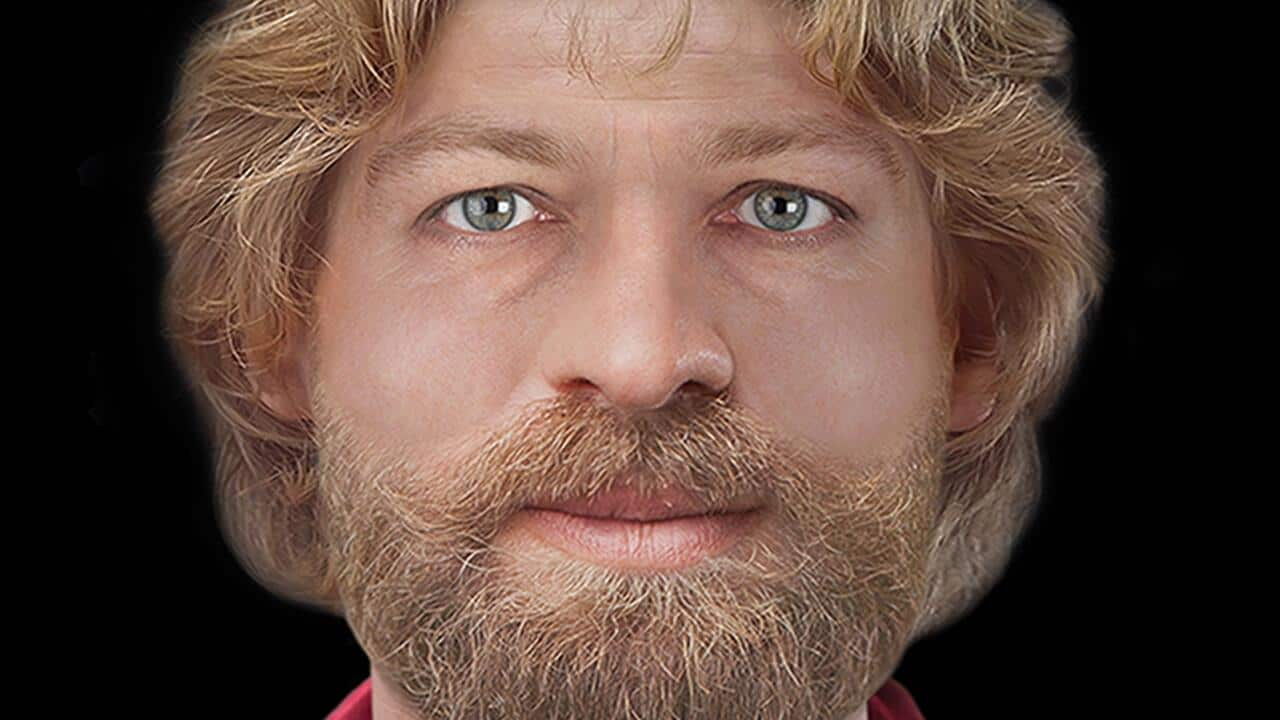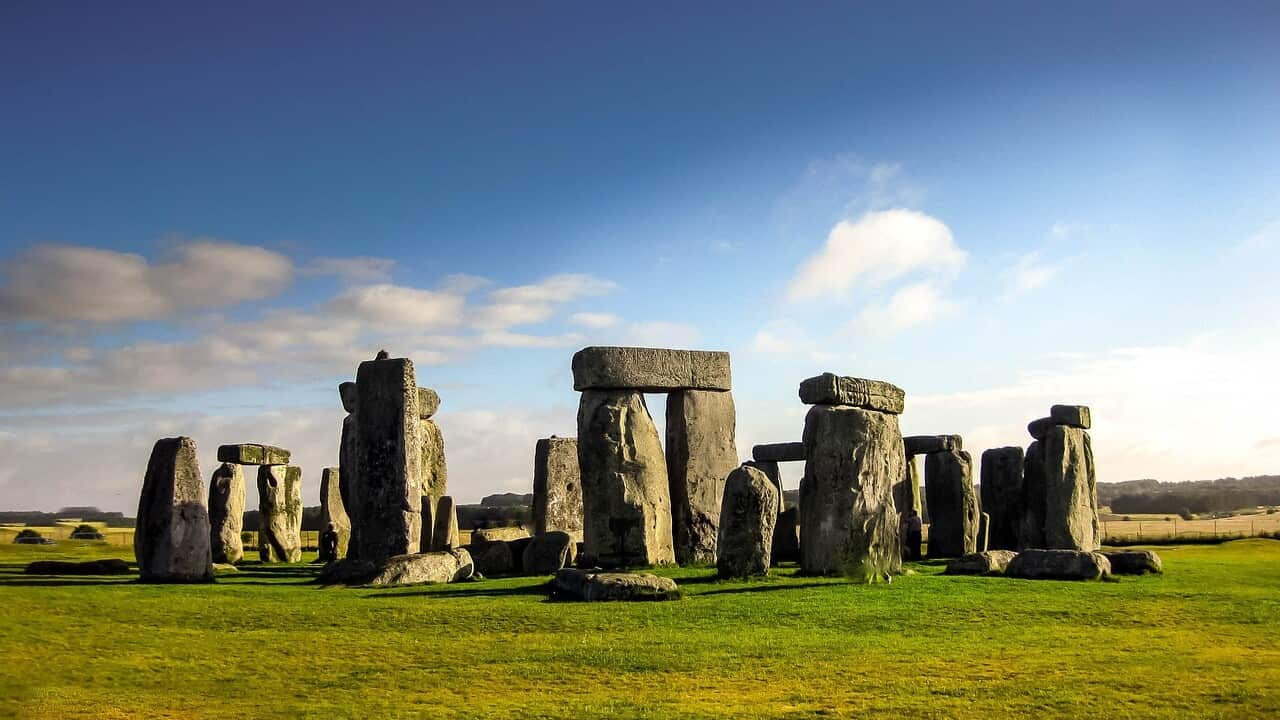Viking earl and later Saint, Magnus Erlendsson remains a legendary figure in Orkney but his story - like the many discoveries featured in documentary series Britain's Ancient Capital: Secrets of Orkney - is a surprising one.
There were a few possible reasons Magnus refused to fight during at least one battle, though it’s hard to imagine legendary Viking Ragnar Lothbrok would approve of his refusal to take up arms for either of them.
A key historical source The Orkneyinga Saga contends that Magnus’ refusal to fight in the Battle of Anglesey Sound in 1098 was due to his adopted Christian faith. This was a Viking resistant to violence.
But Magnus was cannonised so this version of events may have come from the need to sanctify his image. It may be that Magnus’ conscientious objection was politically motivated rather than an act of piety. Either way, he was likely more akin to Vikings’ monk Athelstan than the bloodthirsty Ragnar.

Magnus was probably more like one time monk Athelstan (left) than bloodthirsty Ragnar Lothbrok (right) in 'Vikings'. Source: SBS
Gutless or defiant?
Magnus and his cousin Haakon Paulsson had joined the war expedition of Norwegian King Magnus Barelegs and though Magnus had sworn an oath of loyalty to the king, he nonetheless dug his heels in when it came to go to battle with the Welsh rulers of Anglesey.
According to eminent historian Barbara E. Crawford’s account in St Magnus and St Rognvald: The Two Orkney Saints, The Orkney Saga records an incredulous king asking Magnus why he was sitting on his laurels. Magnus simply said he had no quarrel with the king’s enemies, “that’s why I’ve no intention of fighting.” As the saga would have it, it was his faith that informed his decision not to participate in the bloodshed. It’s believed he remained on the war ship singing psalms after a remonstration from the king.
“If you haven’t the guts to fight” he said, “and in my opinion this has nothing to do with your faith, get below. Don’t lie there under everybody’s feet.”
So it’s just as likely the future earl’s insubordination was politically motivated. He’s said to have had an alliance with Scotland and it’s possible this was behind his refusal to aid the Norwegian cause, and his rejection of Norway’s royal authority over Orkney.
“Magnus Erlendsson was a very unordinary young man, who deliberately went against the oath of loyalty he had given his king,” writes Crawford.
“The most heinous crime in the medieval code of conduct was to act disloyally or against the interests of one’s lord, and in this instance it was even worse than that. Magnus had joined the royal expedition, he had accepted royal hospitality, he had been given a position of honour in the king’s household and he responded with a gratuitous insult.”
His ballsy move forced him to jump ship into exile for up to seven years before returning to Orkney upon the death of King Magnus Barelegs and the end of Norway’s regal authority.
A brutal murder
Magnus went on to share the earldom of Orkney with cousin Haakon but their rivalry ultimately led to Magnus’ brutal death. It was the manner in which he is said to have peacefully submitted to his fate, as well as his alleged pious pacifism in battle that led to his sainthood and the moniker ‘Magnus the Martyr’.
According to The Orkneyinga Saga, Haakon ordered his cook Lifolf to kill his cousin on the island of Egilsay. As Lifolf wept, Magnus offered absolution.
"Be not afraid, for you do this against your will and he who forces you sins more than you do."
Magnus had one last request, that he be given a noble death.
"Stand thou before me, and hew on my head a great wound, for it is not seemly to behead chiefs like thieves. Take heart, poor wretch, for I have prayed to God for thee, that He be merciful unto thee."
With that Lifolf struck his head with an axe splitting it in two. The year of Magnus’ death is contentious, with estimates ranging from 1115-1118.

St Magnus Cathedral, Kirkwall, Orkney - where Magnus Erlendsson's remains are kept. Source: Getty Images
Stranger Things
Strange things started happening after the murder of Magnus. According to The Orkneyinga Saga the site of his death was rocky and overgrown, but soon afterwards morphed into verdant land.
The exact location of Magnus’ remains is unclear but it’s said a bright, holy light with a “heavenly fragrance” appeared above his grave on the day of his burial. A number of miracles supposedly happened at his grave, notably the ordeal of Bishop of Orkney, William the Old who was struck blind in his cathedral only regaining his sight when he prayed at Magnus’ grave. Spooky.
A twist in the tale
Like any ancient historical account, the accuracy of the sagas detailing Magnus’ life should be given a wide berth, with their authors each having their own agendas to convey. In other words, there was plenty of room for embellishment – not to mention the rose-coloured hindsight of sagas written decades or centuries after the events.
The Orkneyinga Saga presents a saintly Magnus, but another text known as The Greater Magnus Saga paints a far more familiar picture - that of a young, bloodthirsty warrior.
Perhaps Ragnar Lothbrok would have been proud of Magnus after all…
Watch Britain's Ancient Capital: Secrets of Orkney on Sundays at 7:30pm on SBS.
Missed the last episode? Watch it right here:
Share


